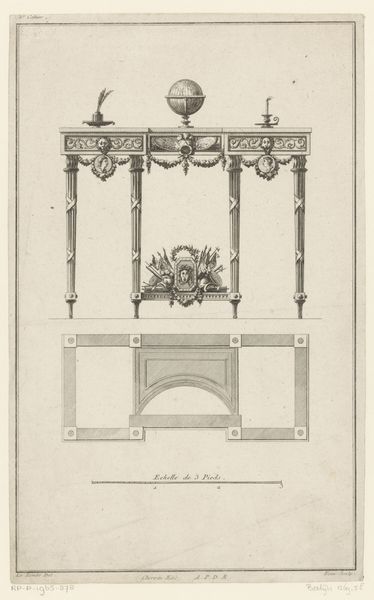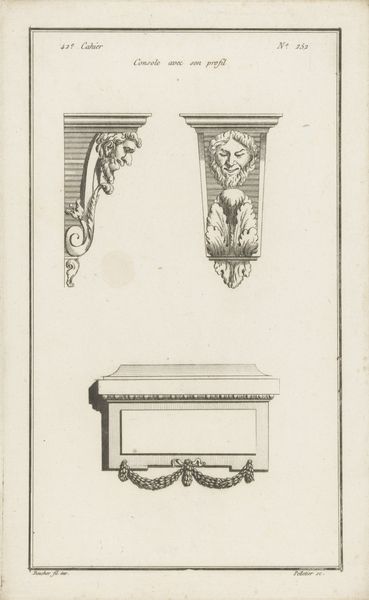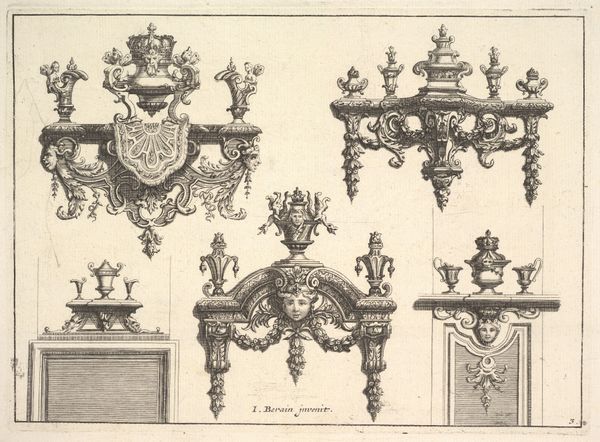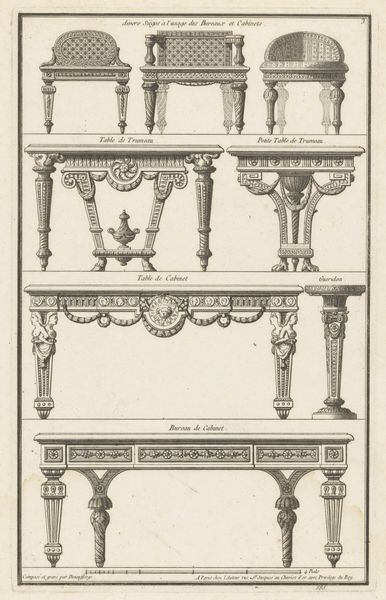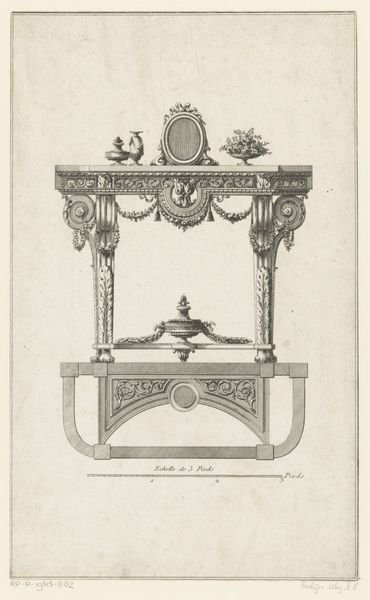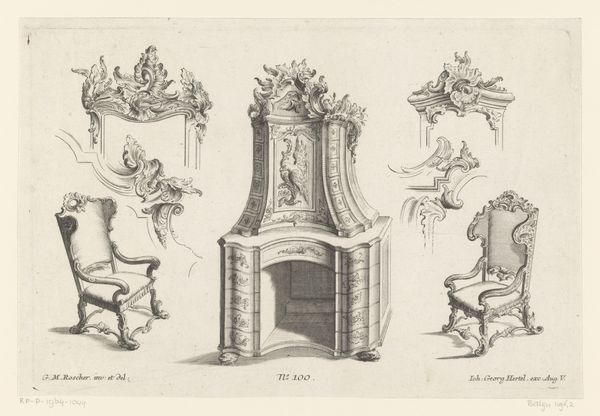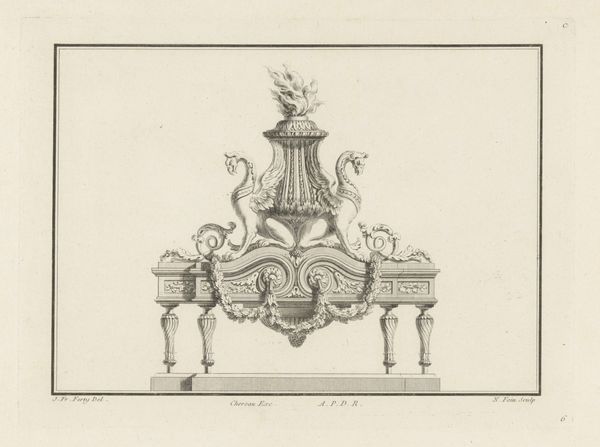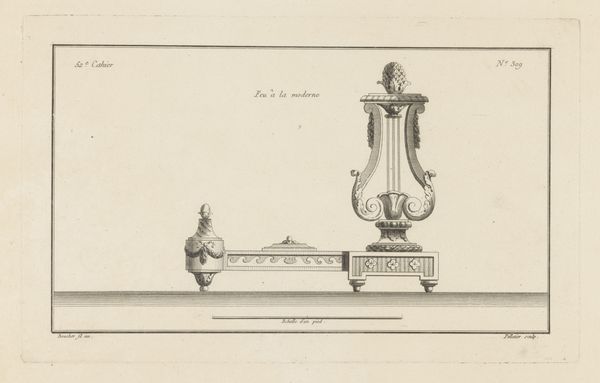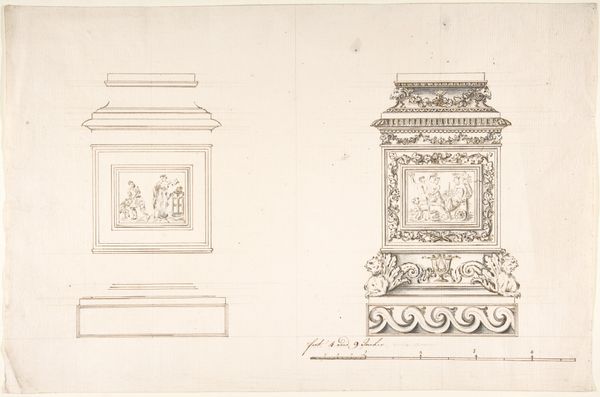
drawing, paper, engraving
#
drawing
#
neoclacissism
#
paper
#
engraving
Dimensions: height 239 mm, width 381 mm
Copyright: Rijks Museum: Open Domain
Editor: Here we have Jacques Juillet’s "Cartelklokken, trofee en gueridon," an engraving on paper from 1777. I find the precision in the linework quite striking; it almost feels like an architectural blueprint. What catches your eye in this piece? Curator: The enduring allure of Neoclassicism lies in its symbolic vocabulary. Notice how Juillet combines clocks, trophies, and a guéridon. Each element isn't just a household object; they embody Enlightenment ideals. Editor: Enlightenment ideals? Curator: Precisely. Consider the clock. More than telling time, it signifies reason, order, and the scientific measuring of the world. The trophies speak to civic virtue and achievement. The guéridon, or small table, suggests a space for intellectual discourse, the salon. Editor: So, the ensemble is making a statement? Curator: Absolutely. These aren’t just decorative objects, they're signifiers, loaded with cultural meaning. Juillet presents them together, proposing a vision of an enlightened domestic sphere, where artistry serves to uphold philosophical ideals. How do those swirling serpentine details strike you, placed in this context? Editor: I initially just thought they were pretty! But I suppose they represent something more than just decoration…perhaps an undercurrent of the older Rococo style even within this Neoclassical setting? Curator: An astute observation! These swirling flourishes hint at a continuity of style and perhaps a psychological reluctance to completely abandon the past, even when embracing a new vision for the future. Editor: I’ll certainly view these objects with a fresh understanding of their significance now! Thank you. Curator: Indeed, observing how everyday objects transform into symbols helps us appreciate the layers of meaning within a specific time and place.
Comments
No comments
Be the first to comment and join the conversation on the ultimate creative platform.
